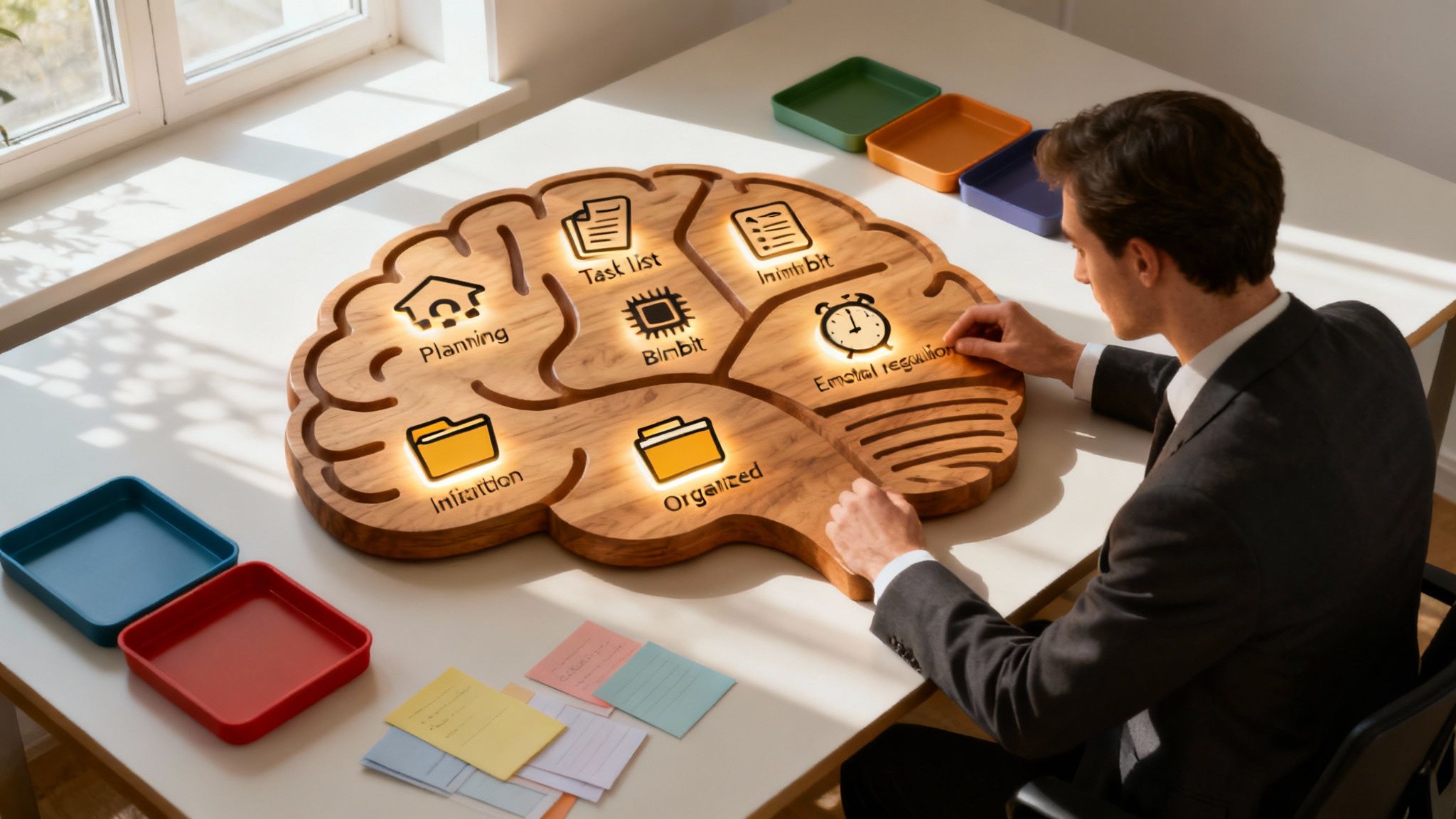Many people with ADHD struggle with remembering simple tasks, like paying bills or responding to texts. This has been commonly attributed to the whole “out of sight, out of mind” ideology, which people correlate with the idea of object permanence.
But is ADHD really related to object permanence?
Yes - but also, not really. Let's discuss, and the let's never use 'object permanence' to describe anything related to ADHD ever again.
Too long; didn’t read
- Object permanence is a developmental milestone – not an ADHD symptom. The term “object permanence” is inappropriately used to describe deficits that are actually object constancy in neurodiverse brains, and it’s important to distinguish these differences.
- Difficulties with object constancy can result in daily challenges like forgetting to take your meds, responding to messages, or paying a bill on time.
- Object permanence is a coined psychological term which refers to a developmental milestone, achieved when children learn material objects and people still exist when they’re no longer visible.
What is object permanence?

Object permanence is the knowledge that an object still exists, even if it’s hidden or out of sight. It mainly applies to developmental skills in infants.
Object permanence in science experiments
The concept of object permanence was coined and tested by psychologist Jean Piaget, who concluded that in order to understand that objects continue to exist when they're not visible, infants must develop a mental representation of the object.1 These mental images are called schemas, or categories of knowledge about something in our surroundings.
To determine if a child has reached this milestone, Piaget conducted a simple experiment by showing a toy to an infant before taking it away—sometimes hiding it under a blanket. He’d then observe the infant to see if they’d look for the toy, showing that the child knows it still exists.
Some children would appear confused and upset when the toy was hidden, suggesting they hadn’t yet achieved object permanence. Other children would search for the toy, indicating their grasp of object permanence.
(Real) examples of object permanence:
Playing “peek-a-boo”
Babies who haven’t yet developed object permanence will think the adult has disappeared when they hide their face.
Hide-and-seek
By the time they reach their first birthday, babies have usually mastered the idea of object permanence.2 They understand that when a person is hiding, they aren’t gone forever, which is why hide-and-seek is fun for them!
Separation anxiety
Infants who understand object permanence may experience separation anxiety. When they know that objects and people exist even when they’re no longer in sight, they may become upset and throw tantrums when parents or beloved toys are no longer visible.
Developing object permanence is an important milestone for babies because it’s the first step to other types of symbolic understanding, such as pretend play, memory development, and language development.
Is ADHD related to object permanence?
Attention-deficit/hyperactivity disorder (ADHD) is a neurodevelopmental condition consisting of persistent detriments, such as difficulty paying attention, hyperactivity, and impulsive behavior.3
ADHD symptoms
There are several ADHD symptoms that are commonly confused with object permanence. These include:
- Difficulty finishing tasks
- Forgetfulness
- Losing track of objects
- Becoming easily distracted
- Challenges with organization and planning ahead
So, why exactly aren't these ADHD symptoms related to object permanence? And, if they're not, what are they?
'Out of sight, out of mind' is not the same thing as object permanence

People sometimes misuse the phrase 'out of sight, out of mind' and compare it to object permanence, which isn’t really correct. 'Out of sight, out of mind' means that you soon forget about people or things that aren’t present for a period of time. People with ADHD do not have an impairment with object permanence.
Even when tasks, items, or people are out of sight, we know that they still exist somewhere. We’re just less likely to maintain an active representation of it in our conscious awareness.
The use of the term object permanence - in the context of ADHD - implies a severe dysregulation in fundamental cognitive abilities in ADHDers… which is not the case. Like, at all.
Object permanence is a developmental milestone – not an ADHD symptom
Object permanence is a cognitive developmental milestone usually reached by infants between 9-12 months. It sets the foundation for the idea that the world exists outside of their own existence, which is an exciting milestone.
Object constancy examples
The symptoms that are often mislabeled as 'object permanence issues' can be more accurately described as difficulties with object constancy. Object constancy is the ability to maintain a positive emotional bond with something even when distance and conflicts intrude.
Oftentimes with ADHD, people forget to do a task if it’s not right in front of them. Because children and adults with ADHD struggle with skills like working memory, they often encounter the following object constancy issues:
- Forgetting to take their ADHD medication because it’s stored in a cabinet
- Seeing texts or emails and saying “I’ll respond later,” and forgetting to respond
- Putting important documents in “important places”, and missing deadlines anyway
- Missing or showing up late to appointments because you were stuck in waiting mode
- Forgetting to pay the bills because mail was “put aside”
- Expired groceries literally just chillin' in your fridge because you couldn't see them behind the milk
- Buying clothes you already own, because they were stuffed in a drawer or back of your closet (Source: @truly_tish_adhd - Instagram)
So, when you forget an item or task because it’s no longer in front of you, “out of sight, out of mind” is a more accurate phrase, according to John Kruse, MD, PhD, a San Francisco-based psychiatrist.
He’s also coined a different term—“in sight, but no insight”—for more common ADHD-induced cases, like those times when you’re not aware of an item that has actually remained in your immediate presence.








